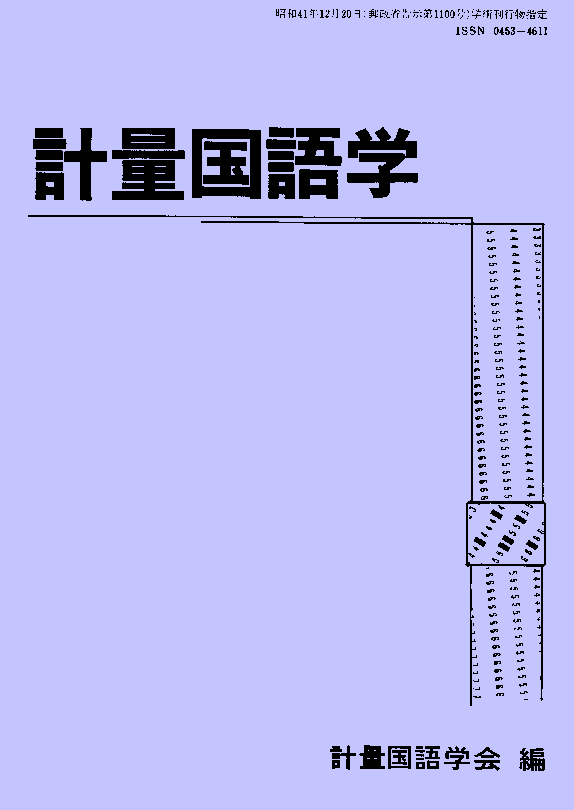Volume 32, Issue 3
Displaying 1-4 of 4 articles from this issue
- |<
- <
- 1
- >
- >|
Paper B
-
Article type: Paper B
2019 Volume 32 Issue 3 Pages 147-162
Published: December 20, 2019
Released on J-STAGE: December 20, 2020
Download PDF (519K)
Book Review
-
Article type: Book Review
2019 Volume 32 Issue 3 Pages 163-168
Published: December 20, 2019
Released on J-STAGE: December 20, 2020
Download PDF (209K) -
Article type: Book Review
2019 Volume 32 Issue 3 Pages 169-172
Published: December 20, 2019
Released on J-STAGE: December 20, 2020
Download PDF (210K)
Tutorial
-
Article type: Tutorial
2019 Volume 32 Issue 3 Pages 173-187
Published: December 20, 2019
Released on J-STAGE: December 20, 2020
Download PDF (432K)
- |<
- <
- 1
- >
- >|
